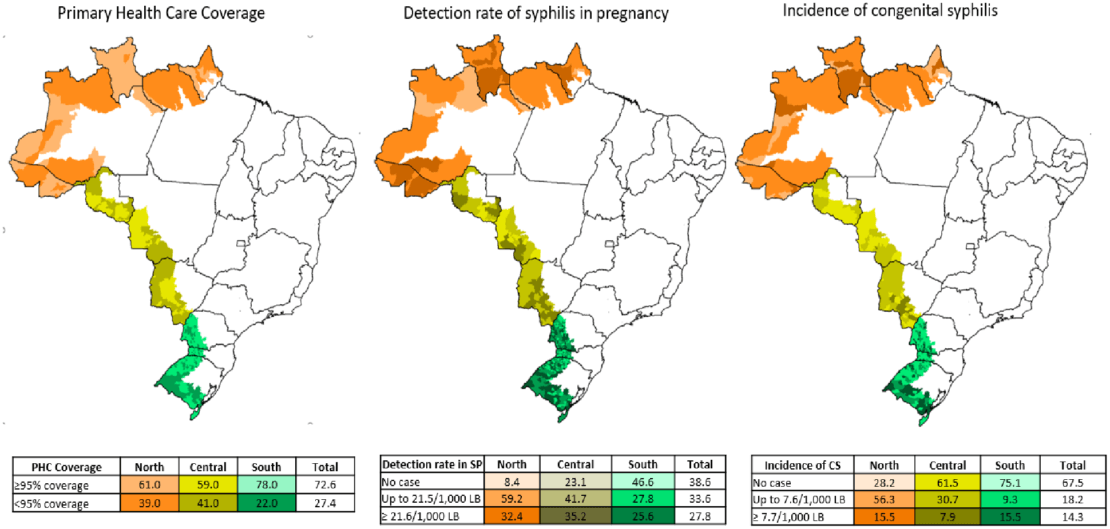By Valéria Credidio/ LAIS/UFRN Communication Advisor
Comprising nine countries, 11 Brazilian states, and more than 10 million inhabitants, the border region in Brazil has syphilis infection rates higher than the national average. The information results from a study carried out by Brazilian researchers, which points out other important factors, such as the rates of acquired syphilis, in pregnant women and congenital syphilis when the infection passes from mother to child.
All the information is part of the article “Gestational and congenital syphilis at the international border in Brazil,” authored by researchers from the Laboratory for Technological Innovation in Health (LAIS/UFRN). The work was published in Plos One, a relevant international scientific journal.
According to Leonor Lanoy, one of the article’s authors, the results showed that the Brazilian border region in 2020, when compared to the national data, had a higher detection rate of acquired syphilis. This rate is equal to the detection rate of syphilis in pregnant women and lower than that recorded for congenital infection. For the researcher, these data show better control of syphilis in the country.
“The study aimed to analyze the distribution of acquired syphilis in pregnant women and congenital syphilis in recent years in the border area since there are no analyses of these diseases in the region. The work is important because the border regions have peculiar characteristics and specific vulnerabilities that may contribute to the transmission of STIs,” said the researcher.
The Brazilian frontier region has specific characteristics, such as being on the margins of large centers and with fewer economic resources, besides being a region of low population density. As explained by the researcher, the findings show that the detection of syphilis in pregnant women remains above the national detection rate and the incidence of congenital syphilis is lower throughout the historical series. “The high detection rates of syphilis in pregnant women demonstrate expanded access to prenatal care in the region. The article seeks to contribute to strengthening the health system and constructing specific, supportive policies that serve citizens from both sides,” he concluded.
“Syphilis No” Project
The article published is another product arising from the “Syphilis No” Project, the result of technical cooperation between the Federal University of Rio Grande do Norte (UFRN) through the Laboratory for Technological Innovation in Health (LAIS) and the Ministry of Health, in partnership with the Pan American Health Organization (PAHO) and, since 2017, has been acting as a tool to induce public policies to confront syphilis in Brazil.
For LAIS executive director Professor Ricardo Valentim, “Syphilis No” is a complex project that explains Brazil’s continental dimension. This article shows the issue of syphilis in pregnant women and congenital syphilis, which are significant public health challenges, specifically in the border region. “This work brings an evaluation supported by data from the Project, which demonstrates the importance of including the syphilis issue in the country’s public health agenda, including the border region,” argued the LAIS director.
Valentim also reinforced that this inclusion occurs mainly because the data shows an increase in cases in this border region of Brazil. “The most important thing is that these municipalities, even located in a region far from the big centers, do the rapid test, prenatal care, and use penicillin to treat syphilis, when necessary. And this is all a reflection of the ” ” Project, which drove a necessary public policy and now enters a phase of analysis of the conduct of this policy,” he concluded.
How to cite
Citation: Lannoy LH, Santos PC, Coelho R, Dias-Santos AS, Valentim R, Pereira GM, et al. (2022) Gestational and congenital syphilis at the international border in Brazil. PLoS ONE 17(10): e0275253. https://doi.org/10.1371/journal.pone.0275253





